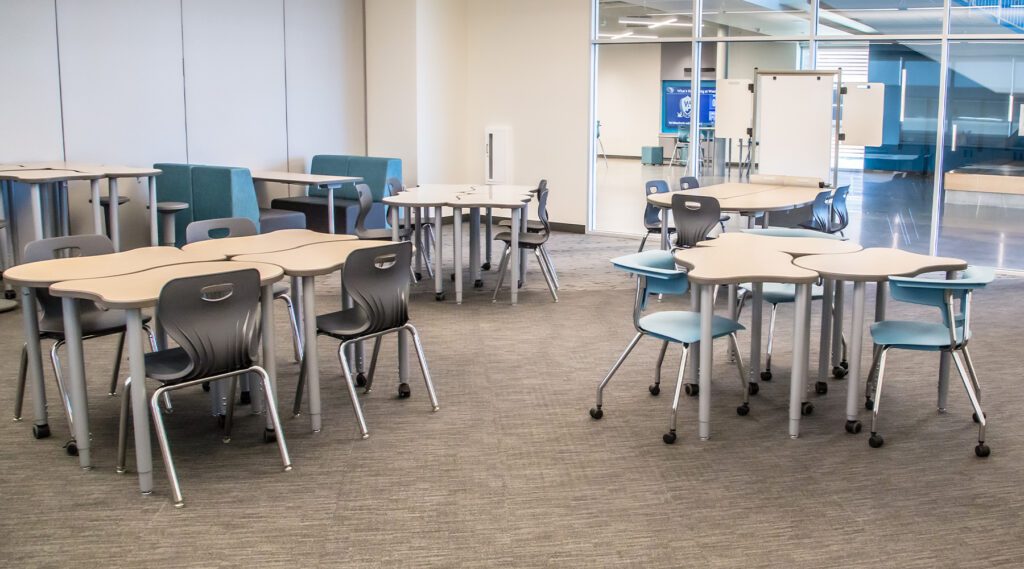
Top 5 Benefits of Cooperative Purchasing for Schools
Behind every purchase order lies a process more complex than it seems. A district needing new science lab furniture may wait months as RFPs are drafted, terms reviewed, vendors vetted, and bids approved, all while staff time is tied up in paperwork.
Traditional bidding is designed to ensure fairness and transparency, but it also brings delays, extra workload, and unpredictable costs. Purchasing through cooperative contracts maintains public purchasing standards but offers a faster, compliant alternative with pre-negotiated agreements that save time, reduce administrative effort, and improve budget predictability.
In this article, we’ll look at the key benefits contract purchasing provides and why it’s becoming an essential tool for schools.
The Challenges of Traditional Bidding
For many districts, the traditional bidding process is the default approach to purchasing. While designed to ensure fairness and transparency it can slow progress, strain staff capacity, and increase costs in ways that aren’t always visible on a balance sheet. These are true whether a district is ordering classroom furniture, updating technology equipment, or replacing outdated facilities.
Administrative Burden
Each purchase requires multiple steps that can pull staff from finance, legal, and administrative teams into hours of paperwork and coordination.
Extensive Timelines
Even straightforward purchases can take months to complete, with a single RFP process averaging 4-8 weeks or possibly more for highly complex purchases.
Hidden Costs
The time and effort required to manage bids represent real, often untracked expenses. These opportunity costs reduce efficiency and further strain resources.
What is Cooperative Purchasing?
Cooperative purchasing is a procurement method in which a purchasing cooperative negotiates contracts on behalf of participating school districts. Once the contracts are established, our customers can purchase directly from an authorized dealer like Meteor Education, using the pre-negotiated pricing with manufacturer partners.
Compared with traditional bidding, contract purchasing speeds up procurement, lowers administrative workload, and often delivers better pricing.
Five Key Benefits of Cooperative Purchasing for Schools
From cost savings to compliance, these are the key advantages schools gain through cooperative purchasing:
1. Financial Savings
Access pre-negotiated, volume-based pricing that helps schools save thousands on furniture, technology, and other essential purchases.
2. Time Savings
Avoid drawn-out RFP processes with ready-to-use contracts, completing purchases much faster than traditional bidding.
3. Risk Reduction & Guaranteed Compliance
Cooperative contracts are competitively solicited and fully vetted to meet legal and regulatory requirements, reducing the risk of errors, bid protests, or non-compliance.
4. Strategic Resource Allocation
Staff can dedicate more time to high-value projects and initiatives, instead of managing the administrative workload of traditional bids.
5. Improved Budget Predictability
Locked-in pricing allows organizations to forecast expenses with greater certainty, protecting against mid-year cost increases in volatile markets.
Getting Started with Cooperative Purchasing
Purchasing through cooperative contracts eliminates many of the hidden costs and delays of traditional procurement, offering faster, more predictable, and lower-risk purchasing. Schools that leverage contracts can reduce administrative workload, access better pricing, and improve budget predictability.
Here are a few simple ways to help you get started:
- Review the contracts already available through cooperative purchasing or state agreements.
- Identify which purchases or projects could benefit from pre-negotiated agreements.
- Align with finance, procurement, and administrative teams to integrate contract purchasing into existing workflows.
Taking these steps helps schools streamline procurement, reduce administrative overhead, and keep resources focused on students rather than paperwork.
Conclusion: Cooperative Purchasing for Schools
Purchasing through cooperative contracts offers a smarter way forward: faster timelines, reduced risk, and more predictable costs compared to traditional bidding. By rethinking procurement, schools can save time, stretch budgets further, and ensure they have the furniture and equipment they need without unnecessary delays.
Cooperative Purchasing